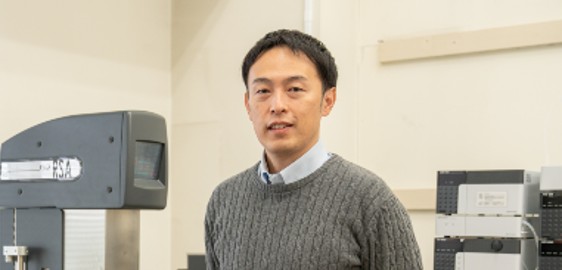Message
Both sustainability and high performance are compatible. By designing new shapes of molecules, we will create next-generation plastic materials.
When I was a student, I observed every day how molecules with complex shapes were intricately bonded in a crystal. The appearance of the individuality of each molecule recognized by adjacent molecules in the form and properties of crystals of visible size made me feel like a small universe. This experience has given me the conviction that if the shape of the molecule can be designed correctly, the properties of the material of visible size can be manipulated at will. At that time, we were dealing with organic molecules with a molecular weight of about several hundreds, but after that, we used complex molecules with a molecular weight of more than tens of thousands to freely manipulate the physical properties and functions of polymer materials such as plastics. , Has been working on molecular design. And now, in our laboratory, we are researching new plastic materials using a group of molecules called super molecules, which have special connections between molecules. Using cyclic oligosaccharides, which are synthesized on an industrial scale by an enzymatic reaction with starch, as the main raw material, transparent plastic can be made even from super molecules such as necklaces in which fine threads are passed through the holes. The individuality of this unusually shaped molecule is beginning to manifest itself as physical properties and functions not found in existing plastics. By understanding the relationship between the individuality of micro molecules and the properties of macroscopic materials, we believe that we will be able to design plastics with high performance without depending on petroleum raw materials.




